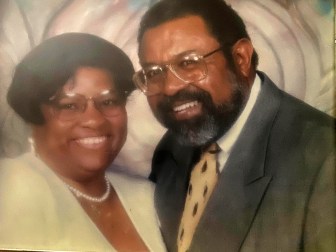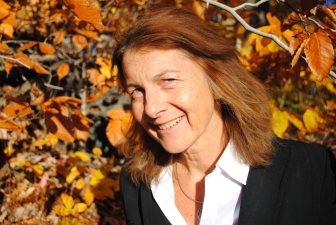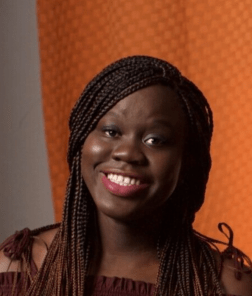For Ernestine Jackson, 80, getting the polio vaccine along with her two young sons and husband was a no-brainer.
“I had no apprehension of [us or] our children getting it,” she said. This was for a personal reason: her father had struggled with the disease, which had given him a short leg and made it difficult for him to find work. “It was hard, especially if [polio’s effect] was really visible,” said Mrs. Jackson. “I was just happy about the fact that my children wouldn’t have to go through what my father … went through.”
Her family took the vaccine in the 1960s, after a church service in Peoria, IL; the vaccine they took was in its sugar cube form, which was the second type of polio vaccine created in 1961 by scientist Albert Sabin.
Violet Petty, 79, remembers being similarly unconcerned about taking the polio vaccine. She was vaccinated at her school in Mississippi in the 1950s; in the early ’50s, America had seen a second large-scale polio outbreak and in 1955, the year that the polio vaccine was invented by scientist Jonas Salk, recorded over 28,000 cases of polio and 1,043 deaths. Mrs. Petty’s readiness to take the vaccine was partly because her parents used to make her look at pictures in Ebony and Jet magazines of children encased in iron lungs, she said, to make her “see how horrible it was.”
Almost half a century later, Mrs. Petty and Mrs. Jackson are waiting to receive their vaccines for COVID-19. Although Mrs. Petty has a pre-existing health condition that means she will be unable to get the vaccine, both women approve of the vaccine.
“I want to make sure that I’m here longer to have time with my grandchildren and my great-grandchildren,” said Mrs. Jackson.
But although Mrs. Jackson feels just as willing to get the COVID vaccine as she was with the polio vaccine, she and her husband acknowledge that a lot feels different about this COVID vaccine — mostly, the America it has come into.

Mrs. Jackson’s husband Donald Jackson, 82, said he thinks “there was much less conversation about ‘should we take it, should we not” with the polio vaccine.
Historian of Modern US History Karen Dunak, who also focuses on post-WW2 America, attributes this different attitude simply to a different America in the 1950s and 60s.
There was a “culture of consensus and agreement” at least on the surface, said Dunak, and a trust in science and expertise that had been strengthened by WW2. And so for many Americans, it didn’t feel like there was a discussion to be had around whether or not to be vaccinated (although debates around the polio vaccine did exist, and included whether the vaccine ought to be distributed federally or voluntarily.)
Even after the Cutter incident — a case of a faulty vaccine distributed by Cutter Laboratories in 1955, that ended up giving over 40,000 people polio while paralysing 200 children and killing 10 — a physician writing for the New York Times still reported that “the nation’s parents have been remarkably calm” and that “in New York City less than .7 per cent of the parents who had authorized free inoculation of their children withdrew their permission.”
This widespread resolve to get the vaccine could be attributed to how polio had been “this spectre looming over the nation and American children” since the early 1900s, said Dunak. It was a disease that had come around every summer for decades, striking down children, and Americans consequently would have been more anxious to find a solution and less focused on questioning scientists and the vaccine.
“Polio was so visible,” said Patty Davis, 65, who has a mark on her arm from Salk’s first vaccine and also got the sugar cube vaccine in the 1960s. “You saw your neighbours who were crippled, you saw FDR was crippled.” She added, “With COVID, the person dies but then they’re gone… it doesn’t seem to have the same effect.”
The COVID-19 vaccine has become politicized today, which can mean that divisions about who is willing and not willing to get the vaccine can fall along party lines. By contrast, said Dunak, the polio vaccine was seen as being “for the good of the people of the United States.”
But the nuances to this general portrayal of 1950s society must also be acknowledged, said Dunak: namely, the experience of Black Americans and other minorities. Black Americans in particular would have had and still have particular reason to distrust the vaccine, largely due to a history of medical racism that has carried over to the present. The Tuskegee Study is often referenced by those unwilling to take the vaccine; this was a syphilis experiment that denied Black men for syphilis over 40 years in order to continue using them as case studies, even after the cure for syphilis had been created.
When it comes to the COVID vaccine, Black Americans remain distrustful of scientists and the most reluctant to take the vaccine. Although their willingness has risen alongside American’s overall willingness, numbers from December 2020 show that 35% of Black adults still said they probably or definitely wouldn’t get vaccinated.
Although Mrs. Petty’s husband Sam Petty, 82, is eager to take the COVID vaccine, he declined an offer to take part in a trial for the vaccine.
“I’m old enough to know about being used as a guinea pig just because of my race,” he said, referring to the Tuskegee Study. But Tuskegee is only part of various types of medical racism experienced by Black individuals, according to Fifth year PhD Immunology student at the University of Chicago Elaine Kouame, who co-founded the organization Black in Immuno.
This racism ranges from lack of access to adequate medical care to assumptions about Black people that can lead to inadequate treatment or to death — one example Kouame gave is the biased notion that Black people have higher pain tolerance that can be seen in the recent case of Dr. Susan Moore. Kouame, whose research focuses on vaccines, said that this history is not adequately acknowledged in efforts to get people vaccinated; A study shows that almost half (48%) of Black Americans still do not think that the needs of Black people are being taken into account with the development of the vaccine.
“Black people are not a monolith,” said Kouame. “What is needed is going to be multilayered.”
For example, while seeing a Black official being vaccinated on screen might help for some, she said for others the impetus could be seeing a high-ranking white person or official getting vaccinated. “It’s by rethinking the system, not just by slapping one solution it’s going to fix it,” said Kouame. “You have to regain people’s trust, and that is super hard.”
Scientists also need to correct misinformation about the vaccine to encourage vaccination, said Kouame. “Scientists don’t do a good job of communicating our work,” she said. “We all get excited about our work, and then forget about the public.”
Some fears that need to be tackled include worries about getting the coronavirus from the vaccine itself, and concerns that the vaccine has been developed too quickly. It’s helpful understand how technology has evolved around vaccines, said Kouame. Although each vaccine has its own challenges and safety concerns, modern technology for the COVID vaccine to be developed much faster than the polio vaccine, which took two-and-a-half years to make.
Different manufacturing processes that means that there is no risk of getting a virus from a vaccine. With the COVID vaccine, for example, scientists only use a portion of the virus such as a protein instead of using a potentially risky, weakened version of the virus used for the polio vaccine. For this reason, Kouame also noted that the COVID vaccine and polio vaccine don’t necessarily lend themselves to comparison, as they are “totally different types of vaccines.”



